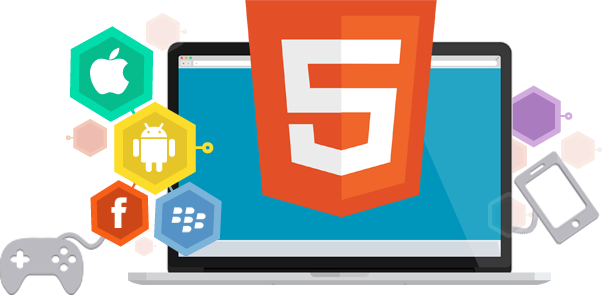Buzz Haven: Your Daily Dose of News
Stay informed and entertained with the latest buzz in news, trends, and insights.
HTML5 Development: Crafting Tomorrow’s Web Today
Unlock the future with HTML5 development! Discover tips and trends to elevate your web projects and stay ahead in the digital game.
Understanding the Fundamentals of HTML5: A Beginner's Guide
HTML5 is the standard markup language used for creating web pages and applications. As a beginner, understanding the fundamentals of HTML5 is essential for developing a solid foundation in web development. This version of HTML introduced new elements and capabilities that enhance the way websites function and present content. Some of the key features include improved support for multimedia, new semantic elements, and enhanced APIs that facilitate interactive applications. By mastering these fundamentals, you will be well-equipped to build modern, accessible websites.
To get started, it’s important to familiarize yourself with the basic structure of an HTML5 document. An HTML5 document begins with a <!DOCTYPE html> declaration, followed by the <html> tag which encompasses the entire document. Inside the <html> tag, there are two main sections: <head> and <body>. The <head> section contains metadata, such as the title and linked stylesheets, while the <body> section houses the content visible to users. Additionally, new semantic elements like <article>, <section>, and <nav> enhance the organization and accessibility of your web pages.

Top 10 HTML5 Features That Will Revolutionize Your Web Development
HTML5 has introduced a multitude of features that significantly enhance web development, making it more efficient and user-friendly. One of the standout features is the Canvas Element, which allows developers to draw and manipulate graphics on the fly using JavaScript. This capability opens up a world of possibilities for creating dynamic visuals and engaging user interfaces. Furthermore, the Audio and Video Tags enable seamless integration of multimedia content without the need for third-party plugins, improving load times and user experience.
Another game-changing feature of HTML5 is the Geolocation API, which empowers developers to create applications that pinpoint users' locations with precision. This leads to personalized content delivery and enhanced interactivity. Additionally, the Local Storage and Session Storage features provide a robust way to store data on users' devices, allowing for offline access and faster performance. As we explore these Top 10 HTML5 Features, it becomes clear that they are set to revolutionize web design and development, pushing the boundaries of what's possible online.
How HTML5 is Shaping the Future of Responsive Design
HTML5 is revolutionizing the world of responsive design by providing developers with a robust framework that enhances the user experience across all devices. One of its standout features is the introduction of semantic elements such as <header>, <footer>, and <article>, which allow for better content organization and improved SEO. This semantic structure not only aids in making websites more accessible but also helps search engines to crawl and index content more effectively, ultimately leading to better visibility in search results.
Furthermore, HTML5 supports advanced multimedia elements like <video> and <audio>, enabling developers to implement rich media content without relying on third-party plugins. This capability is crucial for responsive design, as it allows for a more fluid and adaptable layout that can respond seamlessly to different screen sizes. As a result, users enjoy a consistent experience whether they are on a desktop, tablet, or smartphone, making HTML5 a key player in the future of web development and design.